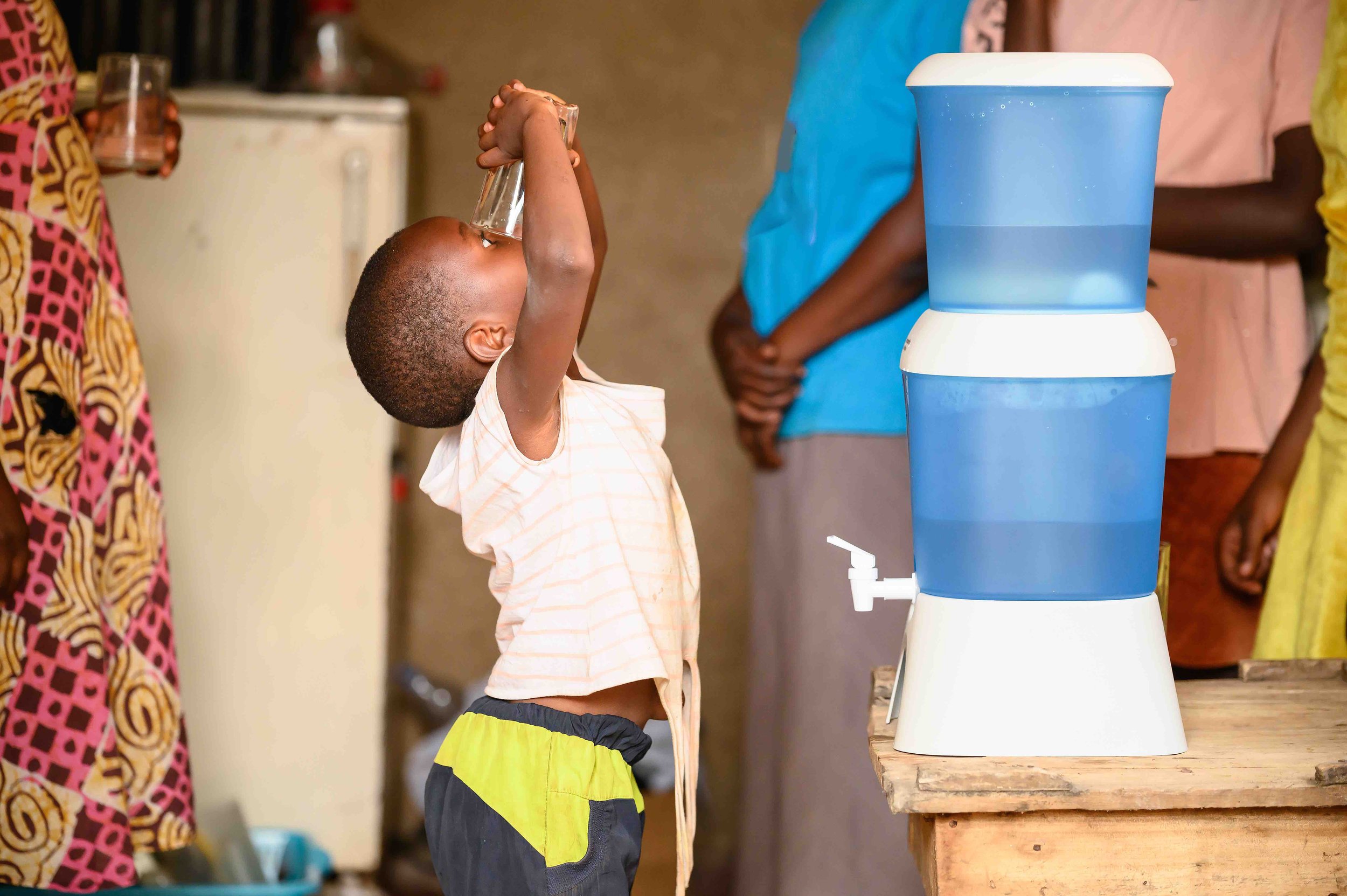
Safe Drinking
Water Technology
and Impact
Why Safe Drinking Water?
In Sub-Saharan Africa heavily 771 million people lack even basic drinking water services.
Unsafe drinking water contributes to millions of cases of waterborne diseases and premature deaths annually.
Vulnerable women and children are disproportionately affected by water scarcity who spend significant time and effort collecting water from distant and unreliable sources.
Boiling water becomes challenging where fuel is expensive and scarce, leading to breathing problems from regular fuel burning and greater emissions as well burning biomass.
In Community Carbon markets, financial constraints make modern water purification solutions and reliable access to clean water elusive or unreliable to make a real difference to day-to-day lives.
Household Safe Drinking Water
The water filters we use are simple, effective, and save lives removing 99.99% of bacteria protecting families from widespread water borne diseases such as cholera, dysentery, diarrhea.
No electricity or pressurization required.
14L total capacity makes safe water always available in the home and can be used with multiple water sources e.g. stream, borehole.
Provides household savings removing the need for boiling water and reducing health costs associated with drinking contaminated water.
“Before I bought the water filter, I could miss work due to illness, but since I bought the water filter, I have not missed work due to illness....the safe water has kept me healthy.”
Zawadi, Safe Water Customer, Uganda
School Safe Drinking Water
Bespoke testing of water supply to prioritise schools in immediate danger of using contaminated water supplies.
A chlorine based treatment system is installed and then fully maintained over its lifetime by Community Carbon.
The system removes 99.99% bacteria and viruses and provides thousands of students and teachers per school with clean drinking water.
“Ever since the safe water system was installed, children have not been sick off water borne illnesses, they have been able to focus on their work and excel.”
Head Teacher of New Kamulanga School, Lusaka Zambia
Safe Water: Impact on Sustainable Development Goals
SDG 1: No Poverty
Savings due to reduction in purchased fuel consumption
SDG 3: Good Health and Well being
Convenient access to safe, clean drinking water in household environment.
SDG 5: Gender Equality
Disproportionate benefits to women and girls, providing them with time, money, and improved health.
SDG 6: Clean Water and Sanitation
Ensures availability and sustainable management of clean water for almost 310,000 families and 7,500 institutions.
SDG 8: Decent Work
Through the distribution and installation of safe water both direct and indirect employment of 100 individuals is created.
SDG 12: Responsible Consumption
Reduction in the use of non-renewable biomass per household.
SDG 13: Climate Action
Estimated annual average emission reduction of up to 4.4 million tCO2e across Community Carbon projects, over the next 15 years.








CONTACT US














